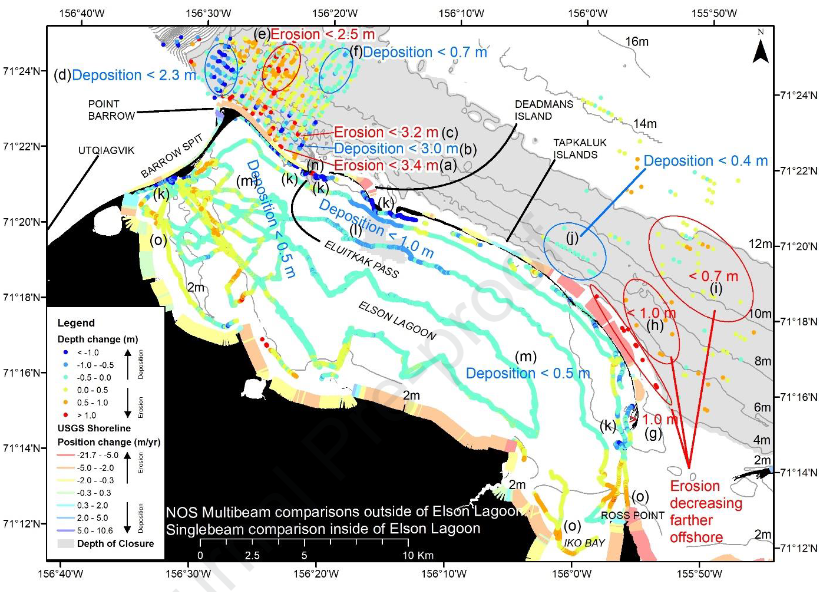Permafrost Thawing Contributes to Beaufort Sea Coastal Erosion

Erosion rates along Alaska’s Beaufort Sea coast are among the highest in the world. Rapidly receding sea ice, an increase in permafrost thawing and warming of ocean and air temperatures have all attributed to the dramatic erosion. These bathymetric changes are causing negative impacts on neighboring communities, industrial and military infrastructure and wildlife habitat.
ACEP’s Jeremy Kasper and Paul Duvoy co-authored a recent publication titled “Nearshore bathymetric changes along the Alaska Beaufort Sea coast and possible physical drivers.” It examines nearshore bathymetric changes along the Alaska Beaufort Sea coast and the possible physical drivers that contribute to its erosion. While there was no direct measuring or modeling of the movement of individual sediment particles, the analysis provided information on fluvial sediment loads, sediment types, seasonal sea ice extents, waves and currents. The information shed light on possible drivers of sediment transport pathways and redistribution patterns.
For more information on this research, please contact Jeremy Kasper at jlkasper@alaska.edu.
Image showing erosion rates taken from the report.


